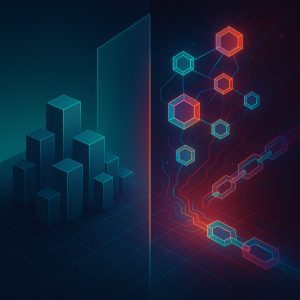How Linera is building the blockchain infrastructure for a boundaryless digital future
For most people, “Web3” still conjures images of clunky crypto wallets, token-gated communities, and a lexicon better suited for a developer forum than an app store. But behind the scenes, a quiet shift is underway, one that’s less about radical reinvention and more about seamless integration. The next wave of internet innovation may not announce itself as Web3 at all. It’ll just work.
At the heart of this evolution is Linera, a blockchain infrastructure startup building for a future where Web2 and Web3 are indistinguishable. With its microchain architecture and user-centric design, Linera aims to collapse the walls between legacy apps and decentralized functionality, offering real-time, scalable, and composable infrastructure that blends into the digital experiences people already use.
The future of blockchain isn’t a revolution you see. It’s the one you feel — in speed, in security, and in how little friction there is.
Building the Backend for Invisible Crypto

In Linera’s world, the term “abstraction” doesn’t mean hiding blockchain beneath a sleeker user interface. It means reimagining the backend so that the interface doesn’t have to change at all. The company’s technology enables apps to leverage onchain features like stablecoins, cross-platform liquidity, and instant settlement, all while maintaining the intuitive UX that users expect from modern platforms.
This isn’t about compromise. It’s about convergence.
While many Layer 1 and Layer 2 networks tout decentralization as the endgame, Linera’s vision is to make the technology so reliable and fluid that no one notices it. In practical terms, that means no wallet pop-ups, no token bridges, and no awkward “connect your wallet” bottlenecks, just apps that perform better because they’re built on better infrastructure.
Microchains and Real-Time Scaling
Linera’s microchains — lightweight, independent chains that scale with users — are central to this shift. Rather than forcing all users and transactions into the same congested lanes, Linera gives each app or agent its own lane. That means faster interactions, isolated execution, and a fundamentally more scalable system for real-time applications.
This architecture is particularly relevant as AI-driven agents and financial bots begin to populate digital ecosystems. In a world where intelligent agents can initiate transactions, query data, and trigger payouts, performance and reliability are requirements. Linera is betting that the blockchain infrastructure of the future won’t just need to support humans, but autonomous digital actors that demand the same guarantees around speed, determinism, and trust.
Composability Without the Crypto Baggage
What APIs did for Web2 — making software modular, interoperable, and easy to plug into — Linera hopes to do for Web3. The company’s infrastructure is designed to be natively composable, enabling developers to embed decentralized logic into any product stack, with no visible crypto overhead.
This opens the door to a wave of quietly Web3-powered apps: a streaming platform that routes micropayments in real time, a supply chain tool that tracks goods onchain behind the scenes, or a chatbot that uses a stablecoin balance to fulfill user requests.
In each case, the blockchain isn’t the feature. It’s the substrate.
From Siloed Networks to Seamless Infrastructure
Web3 has long positioned itself in opposition to the centralized internet. But Linera’s approach suggests something different, not a replacement, but an upgrade. By offering infrastructure that’s fast, scalable, and intuitive enough to disappear into the background, Linera is laying the groundwork for a boundaryless digital future. One where the lines between Web2 and Web3 blur, and eventually, vanish.
In that world, the most transformative apps won’t look decentralized. They’ll just feel better. And the users won’t care if they’re onchain because they won’t even need to know.


